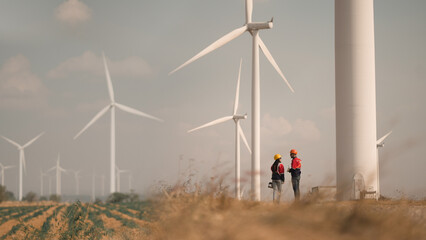
The renewable energy industry is growing rapidly, driving innovation and new standards in every component, including fasteners. These often overlooked elements are critical to the stability, durability and efficiency of renewable energy installations. Here are three major trends shaping fastener demand for a renewable energy future.
- Increased demand for corrosion-resistant fasteners
Renewable energy installations, such as wind turbines and solar panels, are often exposed to harsh environmental conditions, including salt water, extreme temperatures, and high humidity. This exposure can lead to corrosion that compromises the structural integrity and service life of these systems. Therefore, the demand for corrosion-resistant fasteners continues to grow.
Stainless steel, titanium and other advanced alloys are increasingly used due to their excellent corrosion resistance. In addition, protective coatings such as galvanized, galvanized and specialized polymer coatings are being developed to improve the durability of fasteners in corrosive environments.
Offshore wind farms are a prime example of where the use of high-quality, corrosion-resistant fasteners is critical. These fasteners ensure the turbine can withstand the harsh marine environment and maintain operating efficiency throughout its expected service life.
- High-strength fasteners ensure structural integrity
As renewable energy systems become larger and more complex, the structural integrity of these units becomes even more important. For example, wind turbines continue to increase in size to capture more energy, which puts additional stress on their structural components. This trend drives the need for high-strength fasteners that can withstand increased loads and vibrations.
Manufacturers are developing fasteners with enhanced mechanical properties, such as higher tensile strength and increased fatigue resistance. These fasteners are designed to maintain their integrity under the dynamic loads experienced by large renewable energy installations.
In solar farms, the panel mounting system must withstand wind loads and other environmental stresses. High-strength fasteners ensure these systems remain secure and aligned, optimizing energy capture and reducing maintenance requirements.
- Sustainable and environmentally friendly fasteners
The push for sustainability in the renewable energy sector extends to the materials and manufacturing processes used in fasteners. There is an increasing emphasis on developing fasteners that meet the environmental objectives of renewable energy projects.
There is growing interest in the use of recycled materials in fastener production. Manufacturers are also exploring biodegradable coatings and other sustainable practices to reduce the environmental impact of fasteners.
Employing energy-efficient manufacturing processes and reducing waste during production is becoming standard practice. These initiatives not only support the renewable energy industry’s overall sustainability goals but also resonate with the values of eco-conscious consumers and stakeholders.
Solar panel manufacturers are increasingly looking to certifications and standards to ensure that their entire supply chain, including fasteners, meets strict environmental standards. This trend is driving innovation and accountability across the industry.
The development of the renewable energy industry brings new challenges and opportunities to fastener technology. Corrosion resistance, high strength and sustainability are at the forefront of fastener requirements, driving innovation and setting new standards. As these trends continue to evolve, fasteners will play an integral role in the reliability and efficiency of renewable energy systems, helping to drive a sustainable future.
By leading these trends, manufacturers and engineers can ensure their renewable energy projects are robust, durable and environmentally friendly, contributing to the global push towards a greener tomorrow.











Leave a Reply Cancel reply
You must be logged in to post a comment.